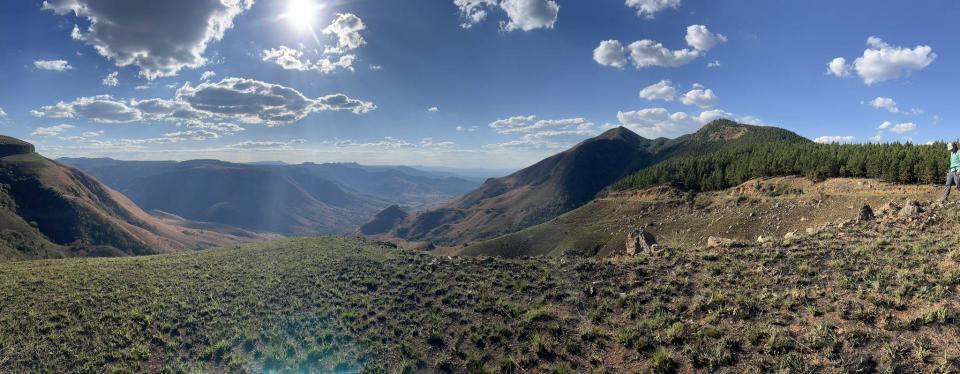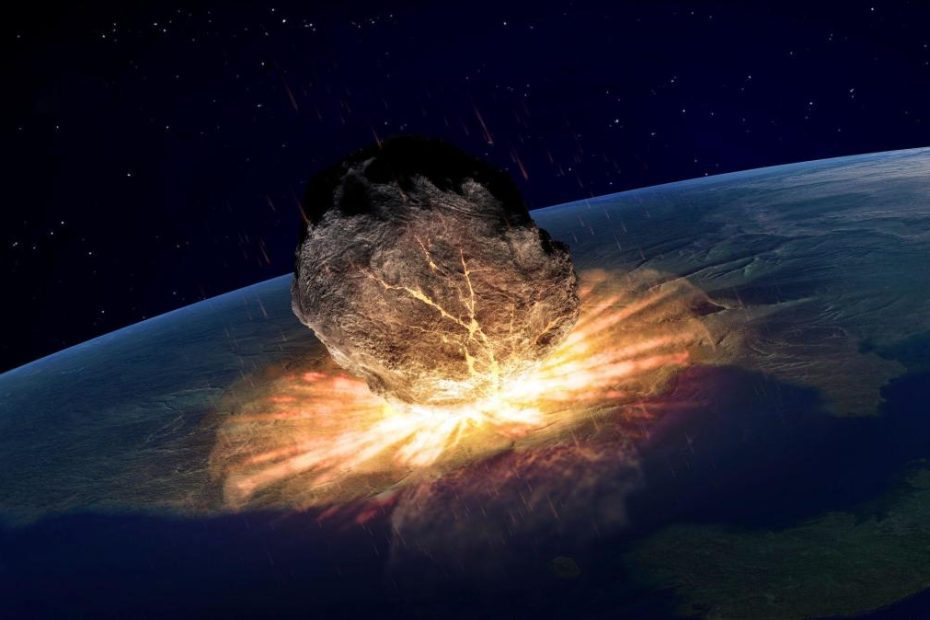A huge meteorite first discovered in 2014 caused a tsunami bigger than any in known human history and boiled the oceans, scientists have discovered.
The space rock, which was 200 times the size of the rock that wiped out the dinosaurs, crashed into Earth when our planet was in its infancy three billion years ago.
With sledgehammers in hand, scientists walked to the impact site in South Africa to chisel away chunks of rock to understand the crash.
The team also found evidence that massive asteroid impacts not only caused destruction on Earth, but also helped early life flourish.
“We know that after the formation of the Earth, there was still a lot of debris flying through space that would collide with the Earth,” said Prof. Nadja Drabon of Harvard University, lead author of the new study.
“But now we've found that life was really resilient in the aftermath of some of these massive impacts, and it actually thrived and prospered,” she says.
The S2 meteorite was much larger than the space rock we are most familiar with. The spot that led to the extinction of the dinosaurs 66 million years ago was about 10 km wide, or almost the height of Mount Everest.
But S2 was 40-60 km wide and its mass was 50-200 times greater.
It struck when the Earth was still in its infancy and looked very different. It was a water world with only a few continents protruding from the sea. Life was very simple: microorganisms composed of individual cells.


The Eastern Barberton Greenbelt impact site is one of the oldest sites on Earth with remains of a meteorite crash.
Prof. Drabon traveled there three times with her colleagues, driving as far into the remote mountains as she could before hiking the rest of the way with backpacks.
Rangers accompanied them with machine guns to protect them from wild animals such as elephants or rhinos, or even poachers in the national park.
They were looking for spherical particles, or small rock fragments, left behind by a collision. Using sledgehammers, they collected hundreds of pounds of rock and brought them back to laboratories for analysis.
Prof Drabon packed the most precious pieces into her luggage.
“I usually get stopped by security, but I tell them a big story about how exciting science is, and then they get really bored and let me through,” she says.


The team has now reconstructed what the S2 meteorite did when it collided violently with Earth. It carved out a 500km crater and pulverized rocks that shot out at incredibly high speeds, forming a cloud that orbited the Earth.
“Imagine a rain cloud, but instead of water droplets falling down, it's like molten rock droplets raining from the sky,” says Prof. Drabon.
A massive tsunami would have engulfed the entire world, tearing up the seabed and flooding coastlines.
The 2004 Indian Ocean tsunami would have paled in comparison, Prof Drabon suggests.
All that energy would have generated enormous amounts of heat that would boil the oceans, causing tens of meters of water to evaporate. It would also have raised the air temperature to 100 degrees Celsius.
The sky would have turned black, choked with dust and particles. Without sunlight to penetrate the darkness, simple life on land or in shallow water that relied on photosynthesis would have been wiped out.


These impacts are similar to what geologists have found about other large meteorite impacts and what was suspected for S2.
But what Prof. Drabon and her team discovered next was surprising. The evidence from the rocks showed that the violent disturbances produced nutrients like phosphorus and iron that nourished simple organisms.
“Life was not only resilient, but also recovered and flourished very quickly,” she says.
“It's like brushing your teeth in the morning. It kills 99.9% of the bacteria, but by evening they are all back, right?” she says.
The new findings suggest the major impacts were like a giant fertilizer, sending essential ingredients for life, such as phosphorus, across the globe.
The tsunami that swept across the planet would also have brought iron-rich water from the depths to the surface, giving early microbes extra energy.
The findings add to the growing view among scientists that early life was actually aided by the violent succession of rocks that hit the Earth in its formative years, says Prof. Drabon.
“It appears that life actually experienced favorable conditions after the impact that allowed it to flourish,” she explains.
The findings have been published in the scientific journal PNAS.
![]()

